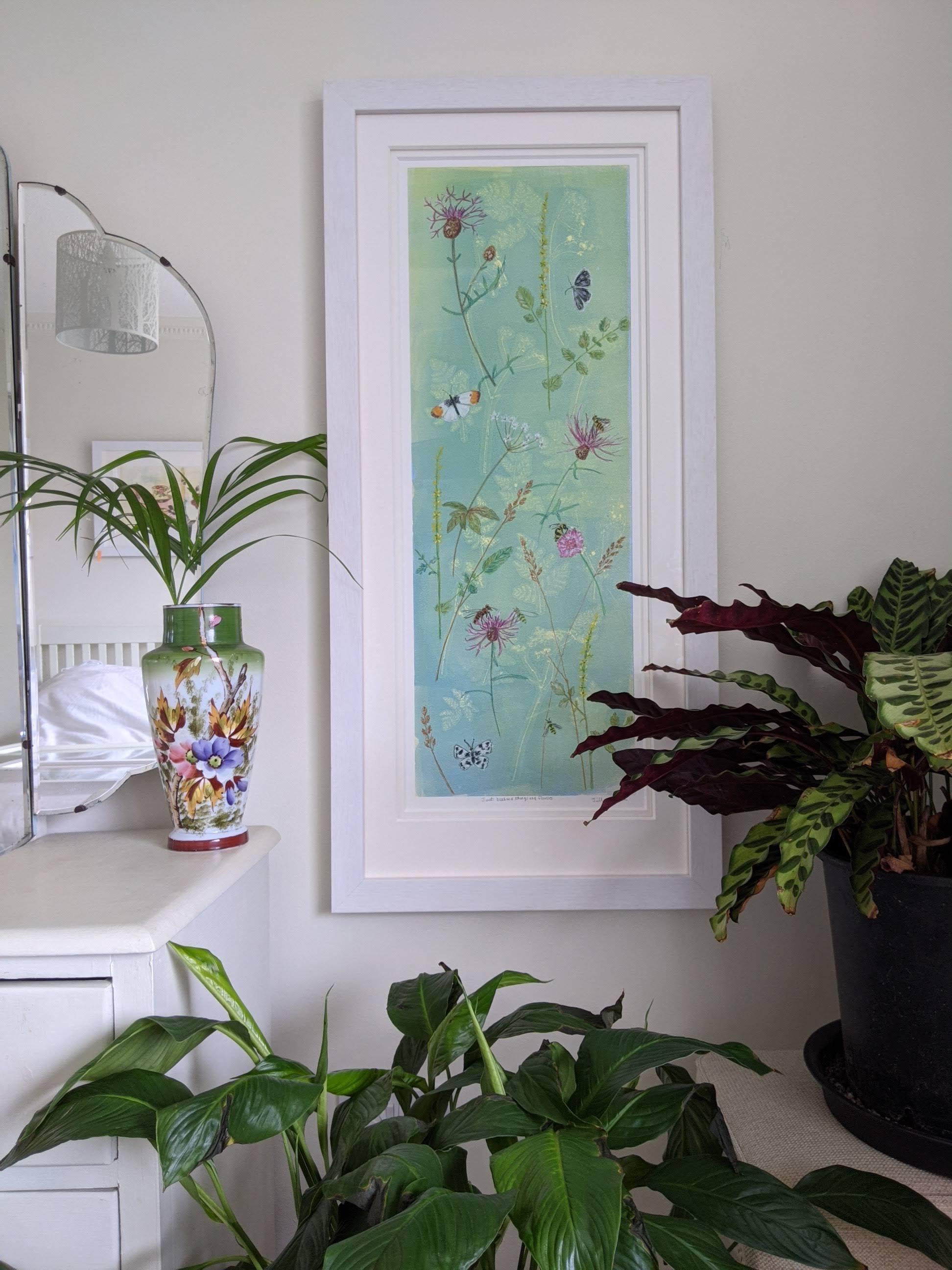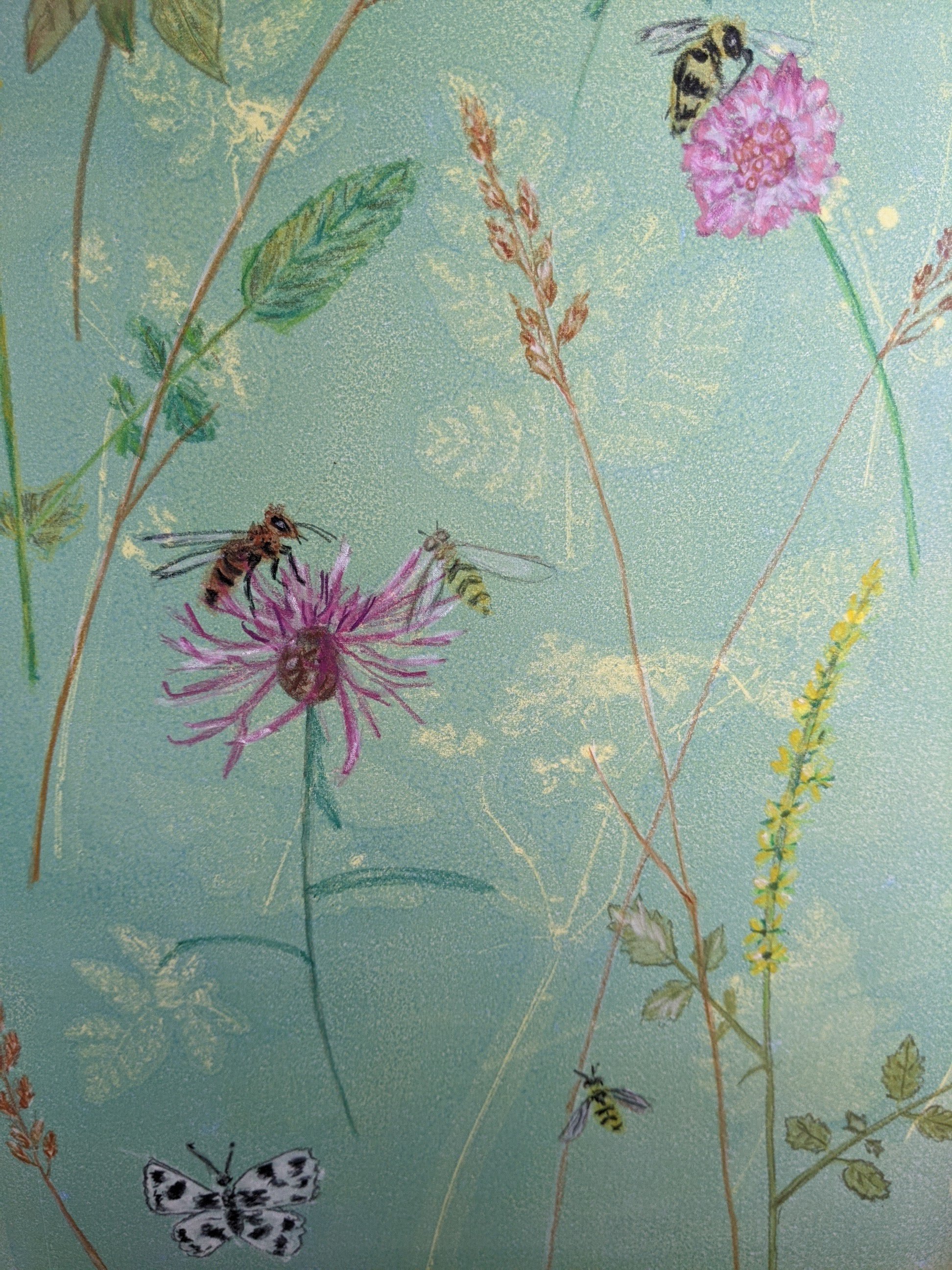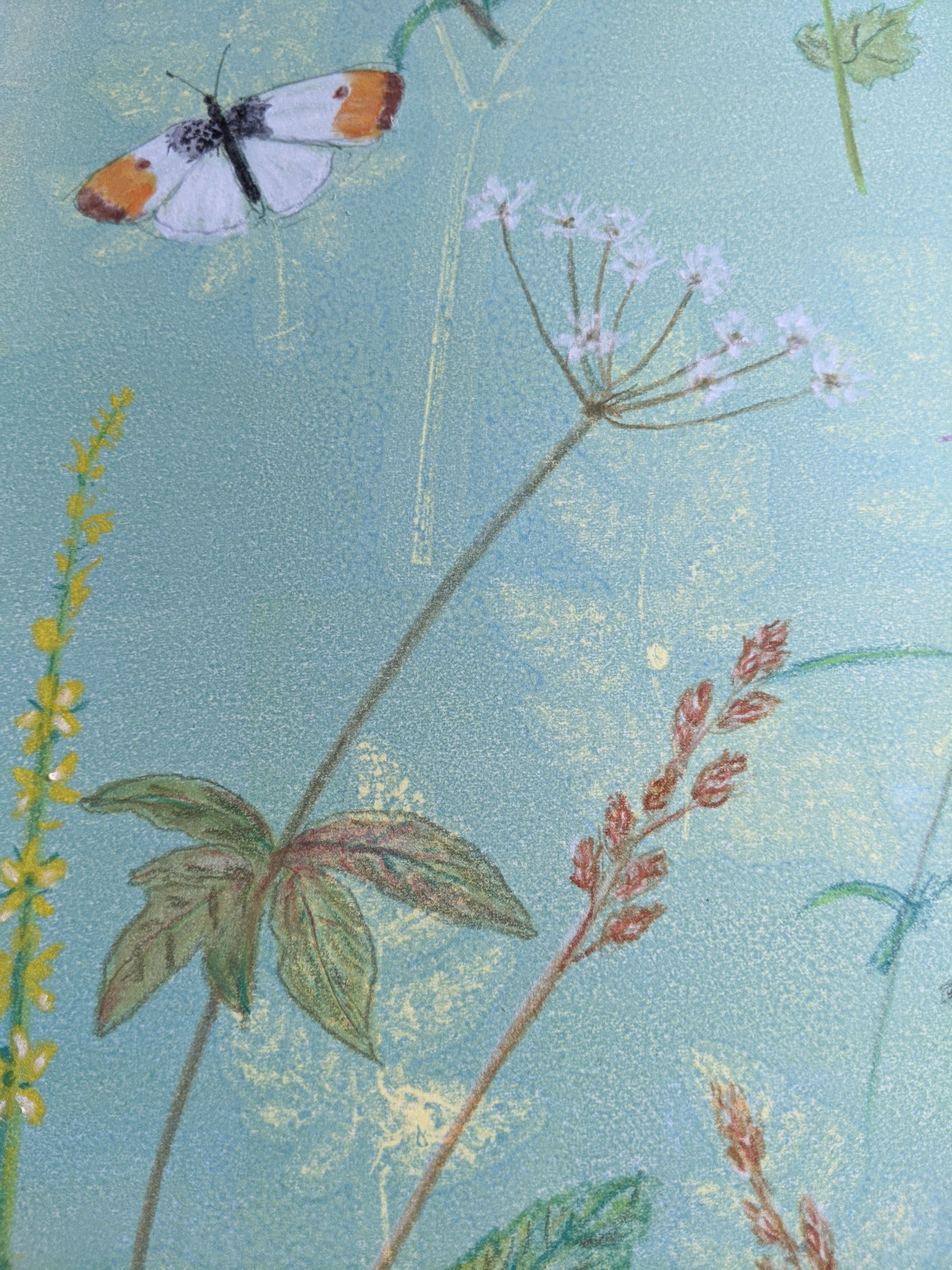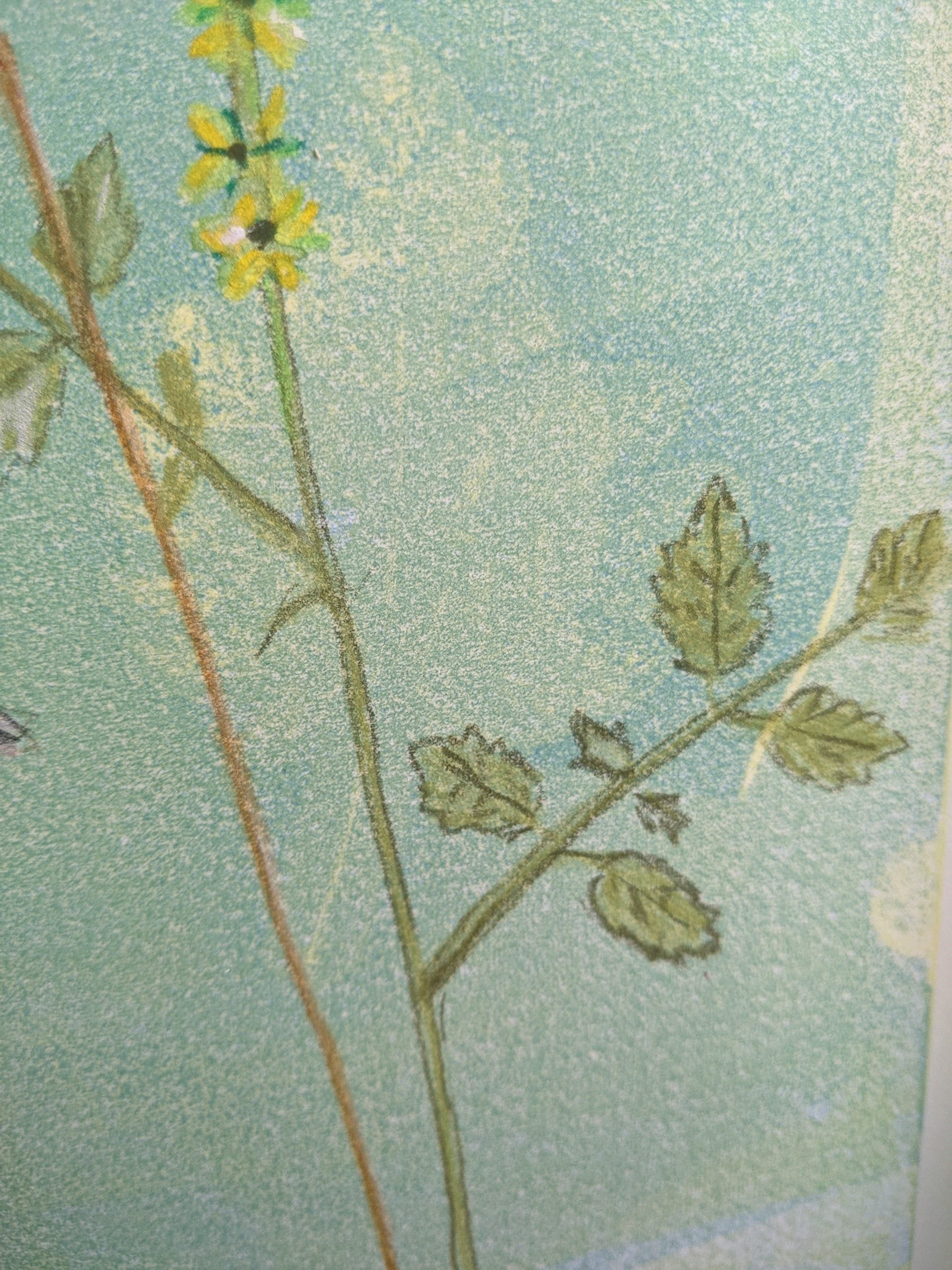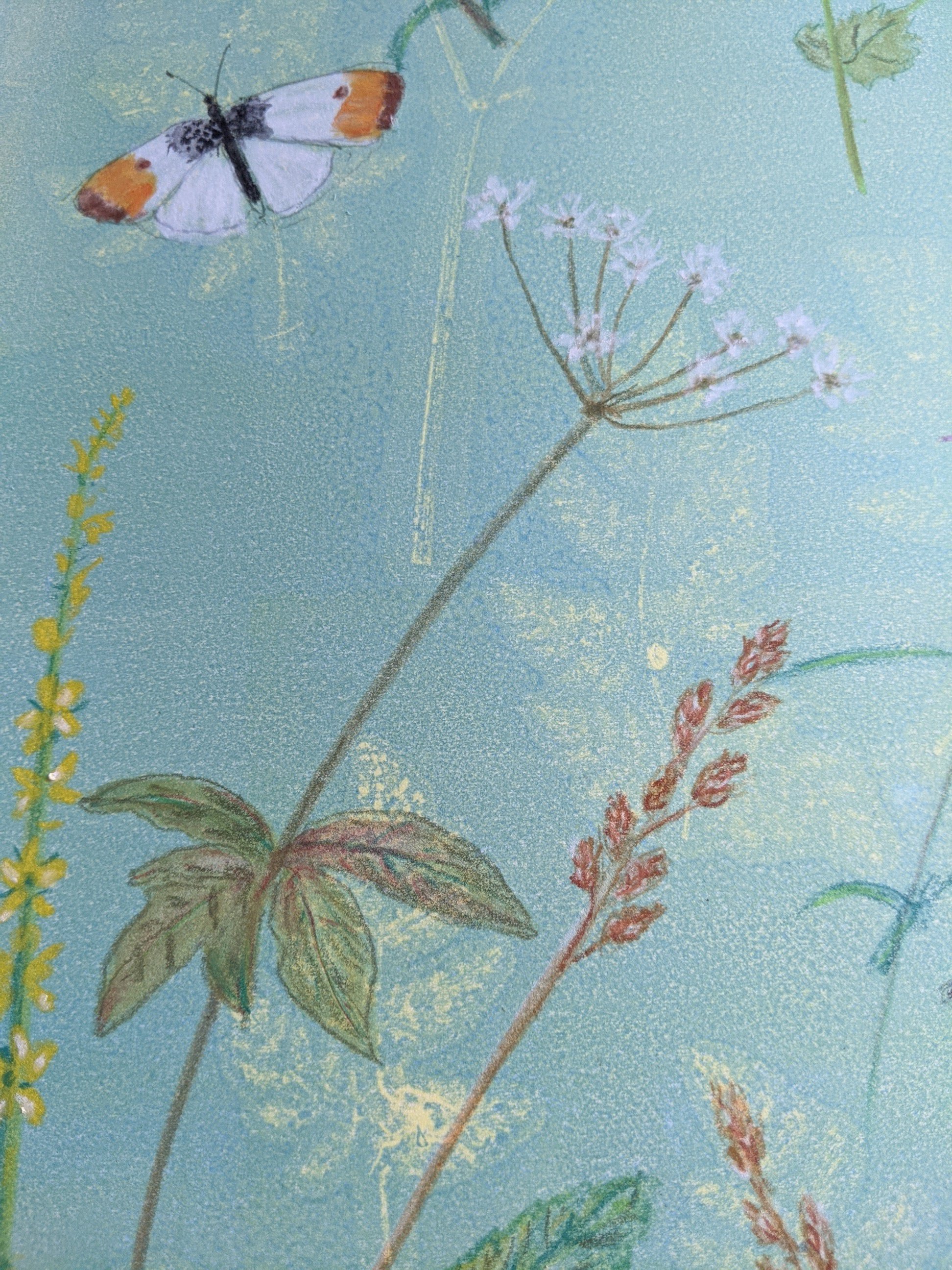Our new allotment
Last summer lots of random packages of soil covered vegetables kept turning up at our doorstep. In the true community spirit of allotment holders, it turns out that our neighbour, Jeff, had been dishing out his glut of produce to a few of us in the street! I began thinking how nice this was and eventually asked Jeff if there might be any spare plots going, thinking that we wouldn’t stand a chance, but by sheer luck one was to become available this spring!
Our new allotment plot down by the shore. April 2023.
Bill, whose allotment we are taking over, had some stipulations: number one, that his plot, 29B, was to be on loan, a sort of test, because Bill was giving us his third plot, and he wanted to see if he’d cope better with just the two. And number two, that we leave his blackberries for him to harvest later this year. This works, because having never had an allotment we don’t know how we’ll get on, but having already spent a few weeks going back and fourth down to the shoreline where plot 29B stands, I think we’ve been bitten by the allotment growing bug.
In preparation for this new growing season, our front room and conservatory have been rapidly filling up with all of the new vegetable seedlings, but vegetable growing is quite new to me. My passion has always been growing plants and flowers for pollinating insects, but over the years we’ve added tomato plants, herbs, salad leaves and more recently potatoes, to our already packed garden, so this allotment couldn’t have been more welcome.
But I remember the days when nearly everyone grew fruit and vegetables at home. In those days we nearly all had bigger gardens, so naturally the average garden would be full of fresh, readily available (and pesticide free) food. Not like today, that’s for sure. We had an apple tree in our garden, which my Mum and Dad planted when they bought the house, along with two pear trees, and two plum trees. The apple tree was a source of entertainment for the kids, and they would often shimmy up the branches in their own unique style to sit and eat sour apples, and to enjoy the tranquillity of being above it all. An apple tree is truly a wonderful thing.
We also had a row of prickly raspberry and gooseberry bushes and rhubarb plants with long and rigid, pink stems pushing up out of the healthy, black soil. We even kept chickens and I remember me and our neighbour Lesley (hi Lesley!) being chased up the garden screaming after ruffling a cock’s feathers one day!
Nowadays it is very unusual to have access to big gardens like that of my Mum and Dad. When I think about the homes and gardens of today, where housing developments are built with uniform little postage-stamp-size gardens, I realise how lucky we were when I was growing up. We had a huge garden with the railway tracks running along the bottom of it. Wild flowers, trees and farmer’s fields made up our worlds back then.
‘Just Bees and Things and Flowers’ Details of a Monoprint by Jill Poole
The importance of gardens and gardening has been highlighted recently by various people concerned with climate change, such as author and entomologist, Dave Goulson, who says that if all of England’s gardens were used for nature, like they were before, we could help divert the climate crisis and sequester lots more carbon.
But sadly it seems that more and more people would rather put artificial grass over the real grass or use plastic flowers or fake leafy screens than spend time creating an abundant garden with healthy food and flowers. In fact there are over 75K Google searches a month in the UK alone for fake grass and fake plants, which is incredibly disheartening.
Saying this, allotments are now highly sought after by people who are keen to grow their own food due to the cost of living crisis, but also either the lack of space in their own gardens or for those who do not have access to a garden at all. Over 100,000 people are on waiting lists in the UK to gain access to a growing space, but also to perhaps re-learn that lost sense connection to the earth and to the sense of community that an allotment can bring. If you are wondering how to apply for an allotment then you can apply with this link from the National Allotment Society, but why not try and befriend people who already have allotments, like we did, to see if there’s another way in?
To get up to speed with this new allotment of ours, I’ve been listening to various podcasts, such as The Roots and All Podcast by Sarah Wilson and learning how to progress with our new plot, because it’s not as straight as you think! This one called The Seedpod by Richard Chivers and Becky Searle is quite a nice one too, if you’re lucky enough to be standing in front of a new plot or garden space and have no idea where to start.
Now my plan, along with fruit and vegetables, is to have my own cut flower patch. I am quite simply over the moon to fulfil this dream of mine and can’t wait to hand deliver bunches of flowers to loved ones and neighbours. Yes, Jeff and Bill will definitely be on the list to receive some of my homegrown, organic British flowers!
So to wrap this up, let’s just say that there are lots of inspiring, cool and hip allotment holders and gardeners out there, and there’s now also me and my husband, who are probably not cool or hip any more, but we can add ourselves to the lucky list of allotment owners, for this year at least!
Remember to look out for more, less than regular, blog posts from me, they will surely all now be of earthy tales from our year down by the shore at plot 29B.
Thanks for reading.
Jill x

